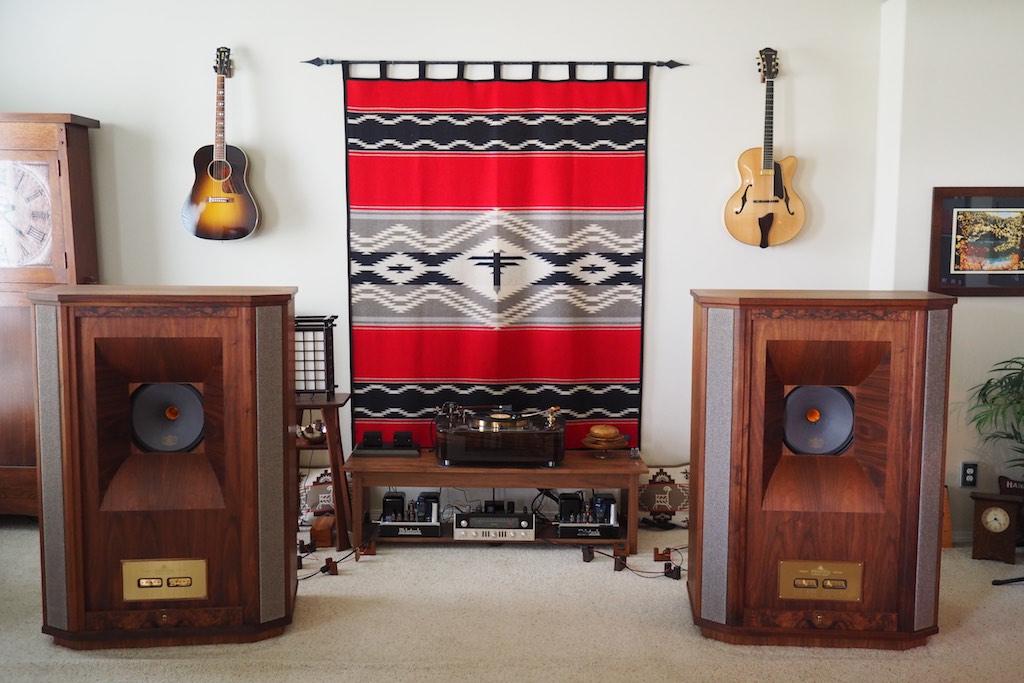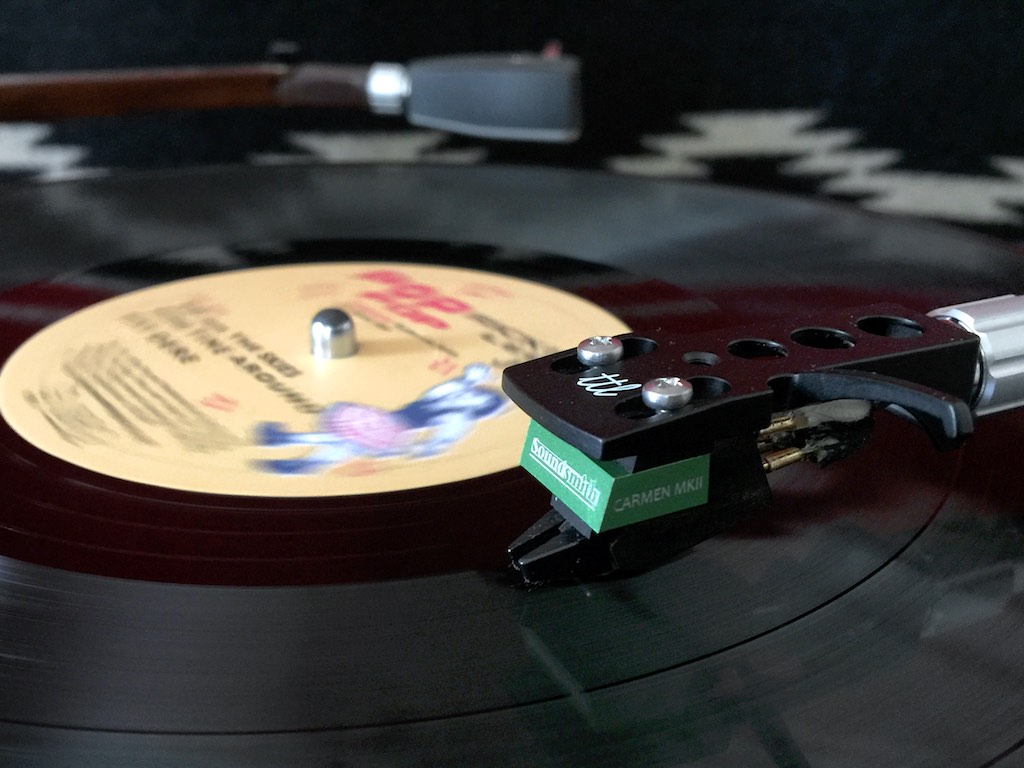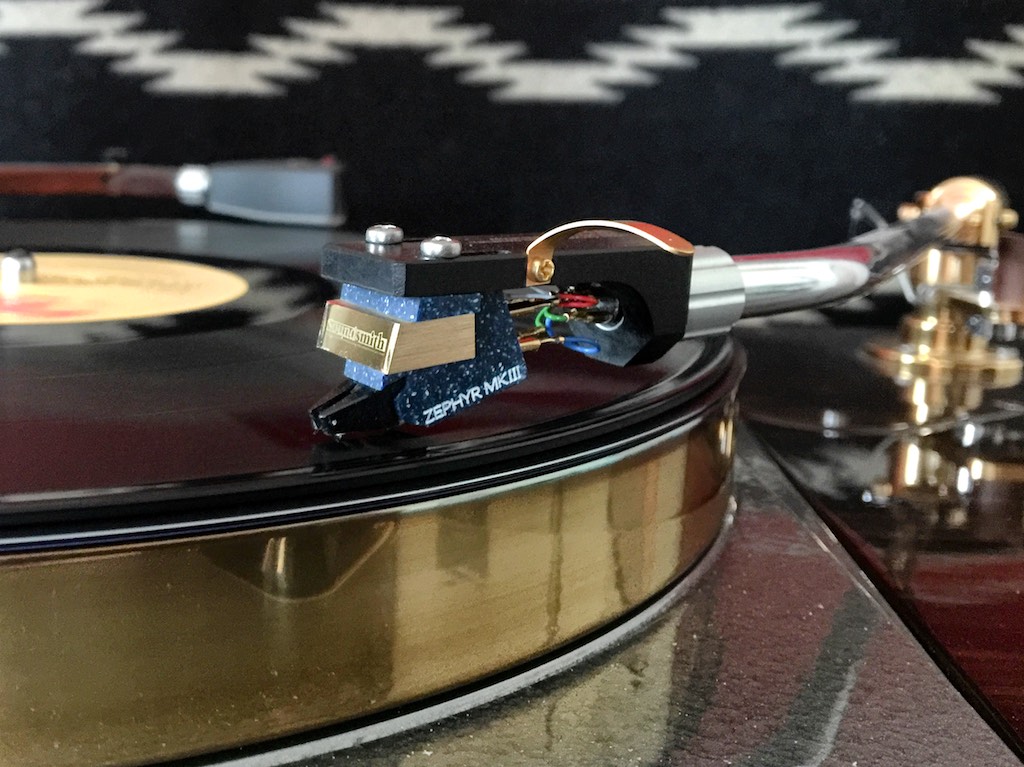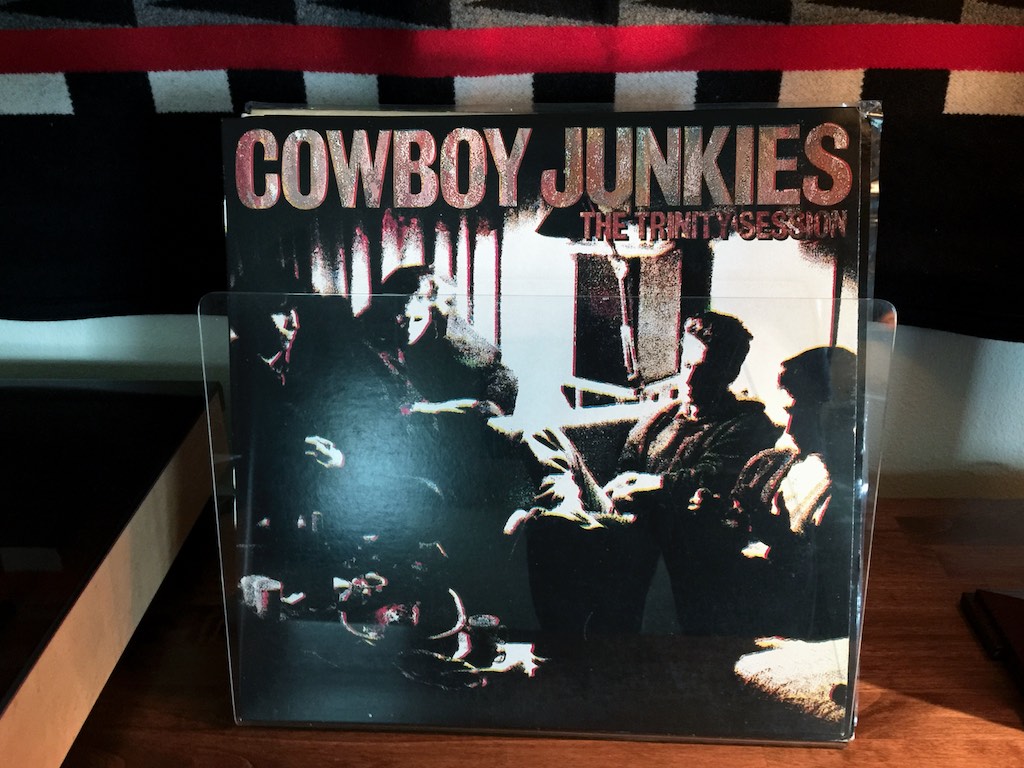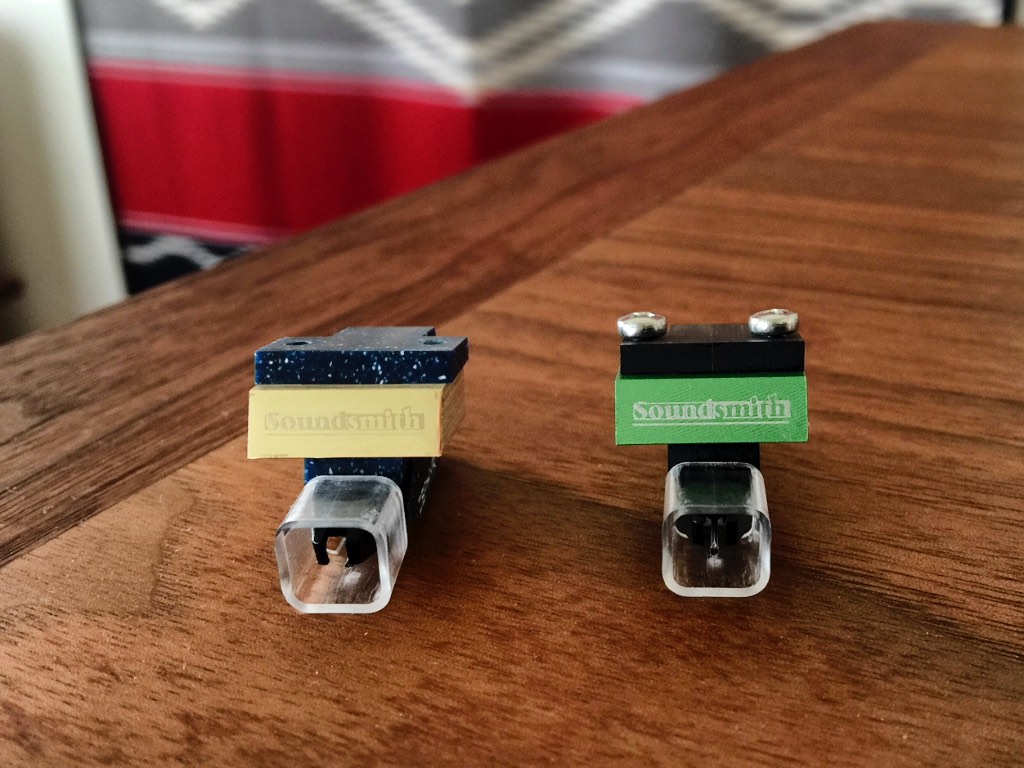
The new Soundsmith Zephyr Mk III phonograph cartridge on the Artisan Fidelity Thorens TD124 turntable.
As I've reported earlier, I found the Soundsmith Zephyr Mk III phono cartridge (above) to be a match made in heaven musically & sonically in my vintage Altec A5-based system, so I've been very eager to hear what the new Zephyr Mk III can do on my CTC Classic 301 turntable in my Westminster-based system (details HERE).
If you've been reading along on my Soundsmith posts, you know I was impressed with the new Soundsmith Carmen Mk II in my Westminster-based system, where it performed at a musical & sonic level that was very comparable to what I am getting from my Ortofon SPU Classic GM MkII stereo phono cartridge in combination with my bespoke Intact Audio nickel core SUT, for less than one third the price.
The new Soundsmith Carmen Mk II sells for $1000 USD, so I was very curious as to what the new Soundsmith Zephyr Mk III that sells for $1500 USD would perform like on the CTC Classic 301 in my Westminster-based system.
After removing the Soundsmith Carmen Mk II from my CTC Classic 301 turntable, I mounted the Zephyr Mk III and dialed in its settings.
I used the same Rickie Lee Jones Pop Pop LP set for the first listen of the new Zephyr Mk III phonograph cartridge on the CTC Classic 301 turntable that I used for my last post about the Carmen Mk II phono cartridge on the CTC Classic 301.
The Zephyr Mk III has the same sort of rich, smooth, timbrally realistic, naturally dynamic presentation of the Carmen Mk II, which really allowed me to relax into and enjoy the music flowing over me.
The Zephyr Mk III sounds more resolving, nuanced, and intimate on Pop Pop than did the Carmen Mk II, while offering up a wider & deeper soundstage, more resolved images on the soundstage, as well as a more voluminous sense of space of the recorded acoustic.
On the flip side, with the Zephyr Mk III there was slightly more emphasis of LP surface noise on Pop Pop than with the Carmen Mk II.
I put another record on with gorgeous female vocals, the Cowboy Junkies' The Trinity Session, featuring Margo Timmins' vocals.
The Zephyr Mk III gives a huge sense of recorded space to The Trinity Session, which filled my living / listening room with lots of natural detail and subtle instrumental nuance, which gave an intimate, sometimes delicate, and a beautiful & highly musical overall feel to the record.
With both the Carmen Mk II and the Zephyr Mk III I got a big dose of smooth, naturally warm, timbrally realistic, tonally colorful music, and they both have a combination of musical & sonic traits that I predict will delight music lovers.
The Zephyr Mk III emphasizes the sonic qualities of the sense of recorded space, a voluminous soundstage, defined imaging, and resolution of detail to a greater extent than does the Carmen Mk II, but in an artful way that still emphasizes overall musicality in a very satisfying way, so that's what you are buying with your extra $500 USD over the price of the Carmen Mk II.
I suspect that listeners who prefer listening at softer levels will be particularly impressed with the Zephyr Mk III's ability to make music come convincingly alive at lower volume levels, no doubt to the appreciation of significant others or neighbors during those late night listening sessions.
I'm just getting started understanding the musical & sonic capabilities of the Soundsmith Carmen Mk II and Zephyr Mk III high-output, fixed-coil, moving-iron, phonograph cartridges, so I'll have a lot more to say as I get nearer to the review for Positive Feedback.
I must say that I'm very impressed with both of these cartridges, as they possess a high degree musicality as well as sonic prowess.
They also are a very good value, and compete as peers with the musicality & sonics of my reference Ortofon SPU Classic GM MkII stereo phono cartridge in combination with my bespoke Intact Audio nickel core SUT, at about a third of the cost for the Carmen Mk II, and at about half the cost for the Zephyr Mk III.
Ok, that's it for now, but there's much more to come on these cartridges!
As always, thanks for stopping by, and may the tone be with you!




